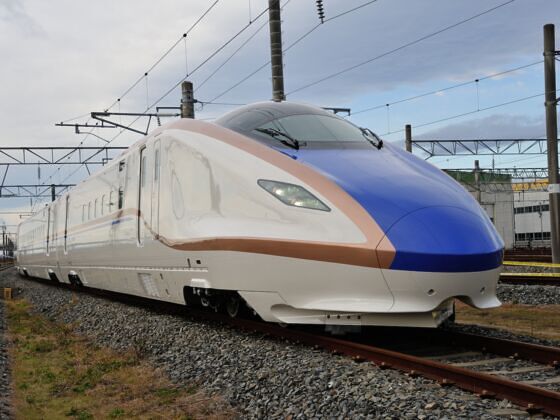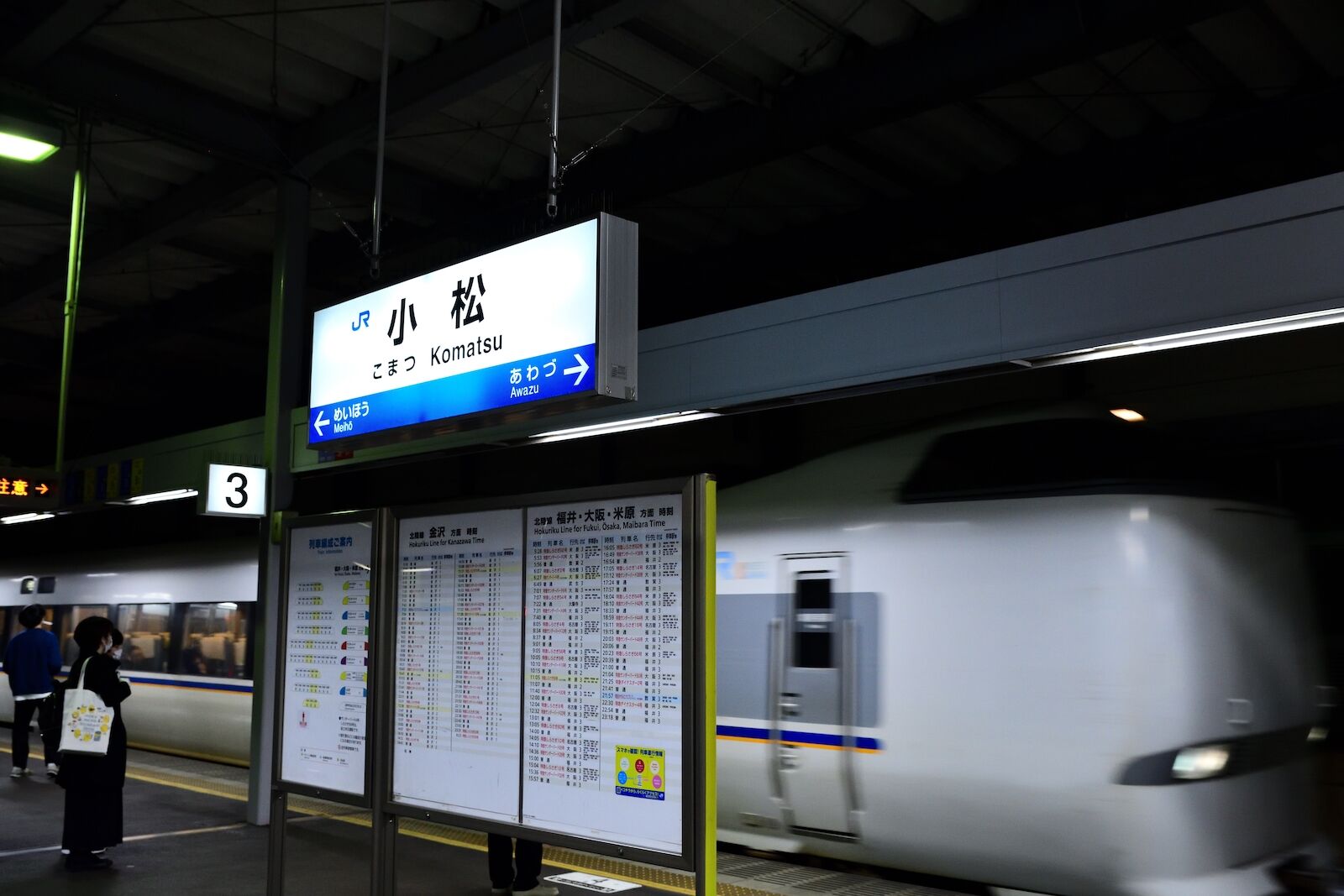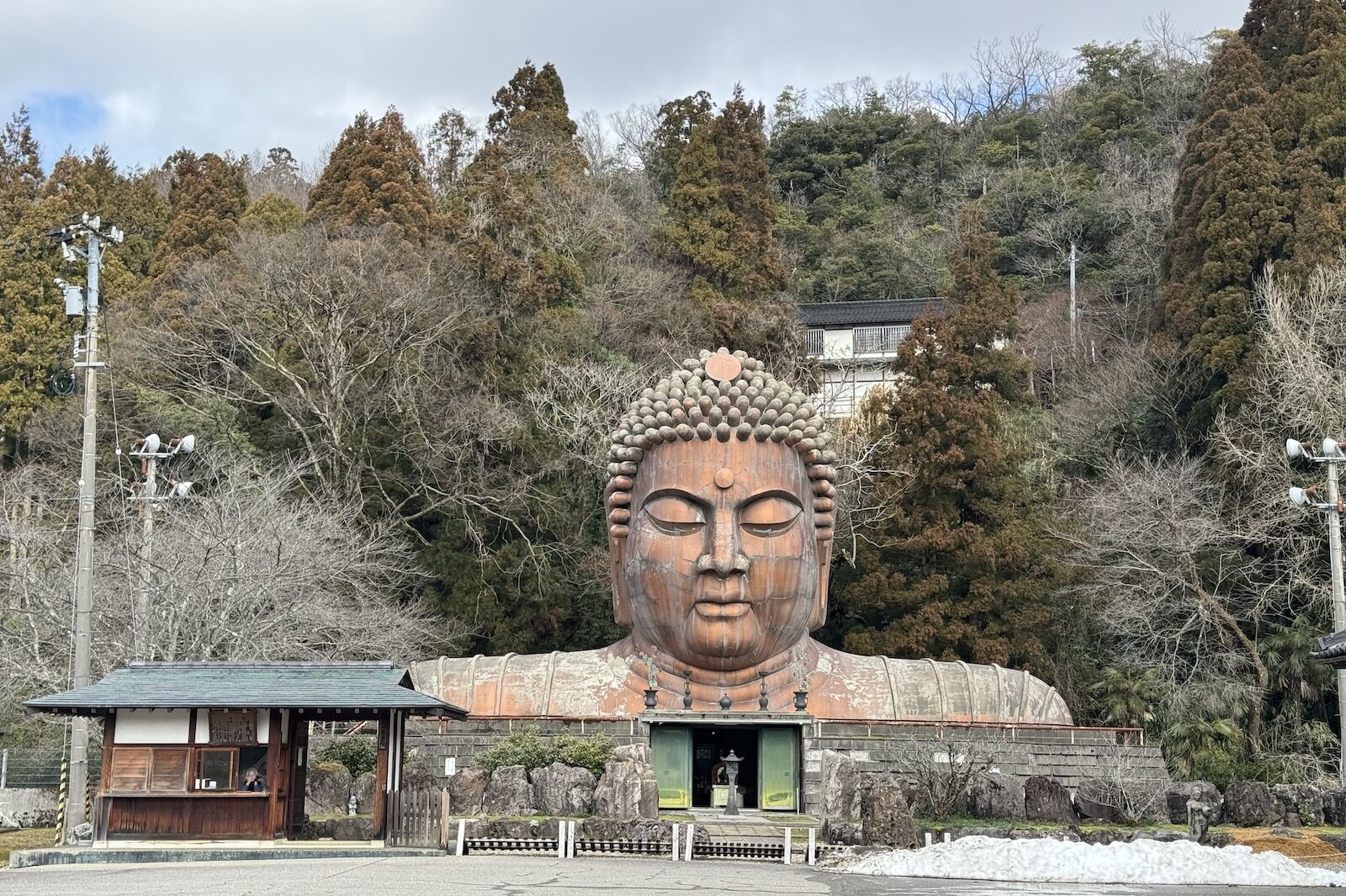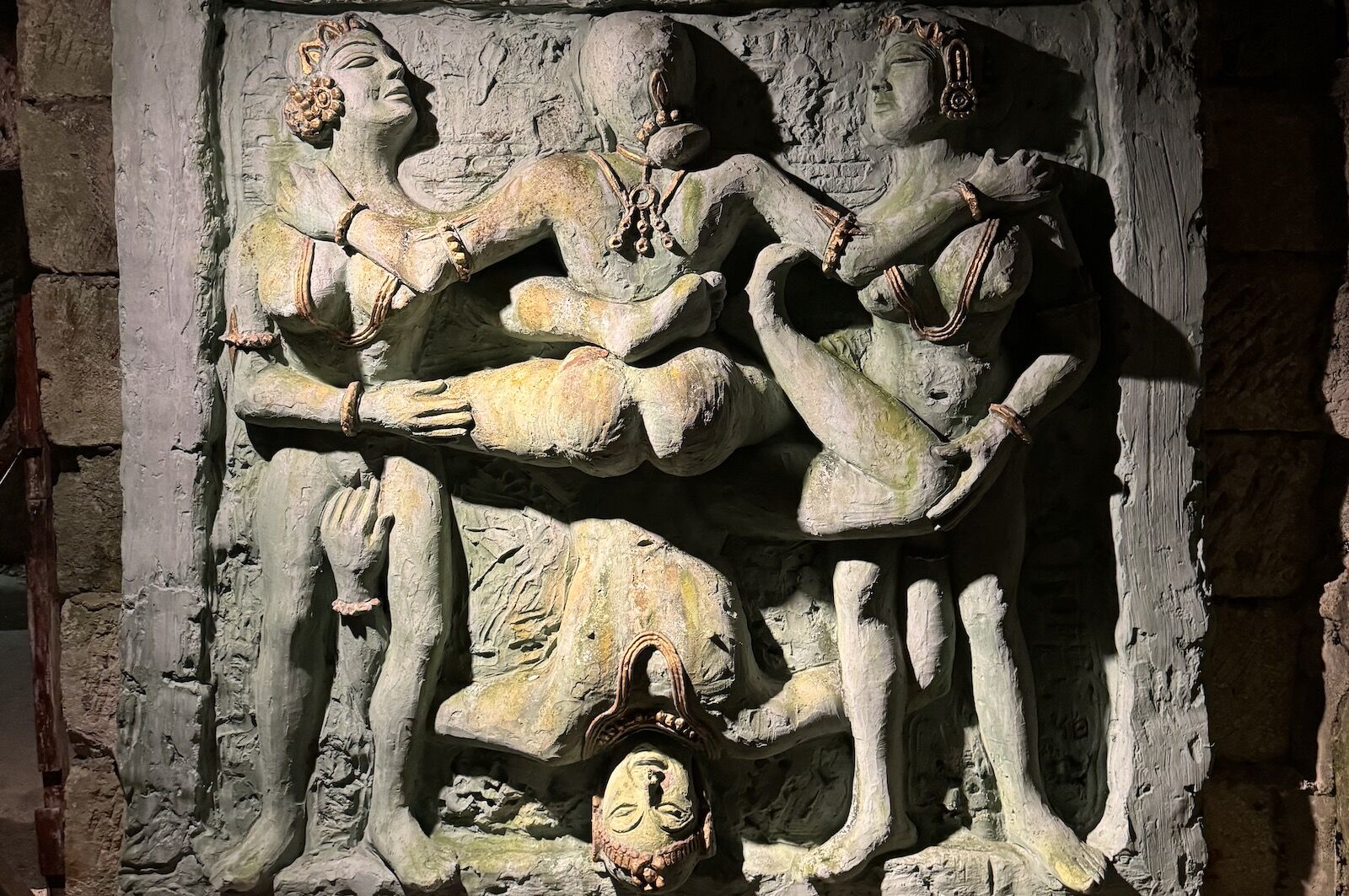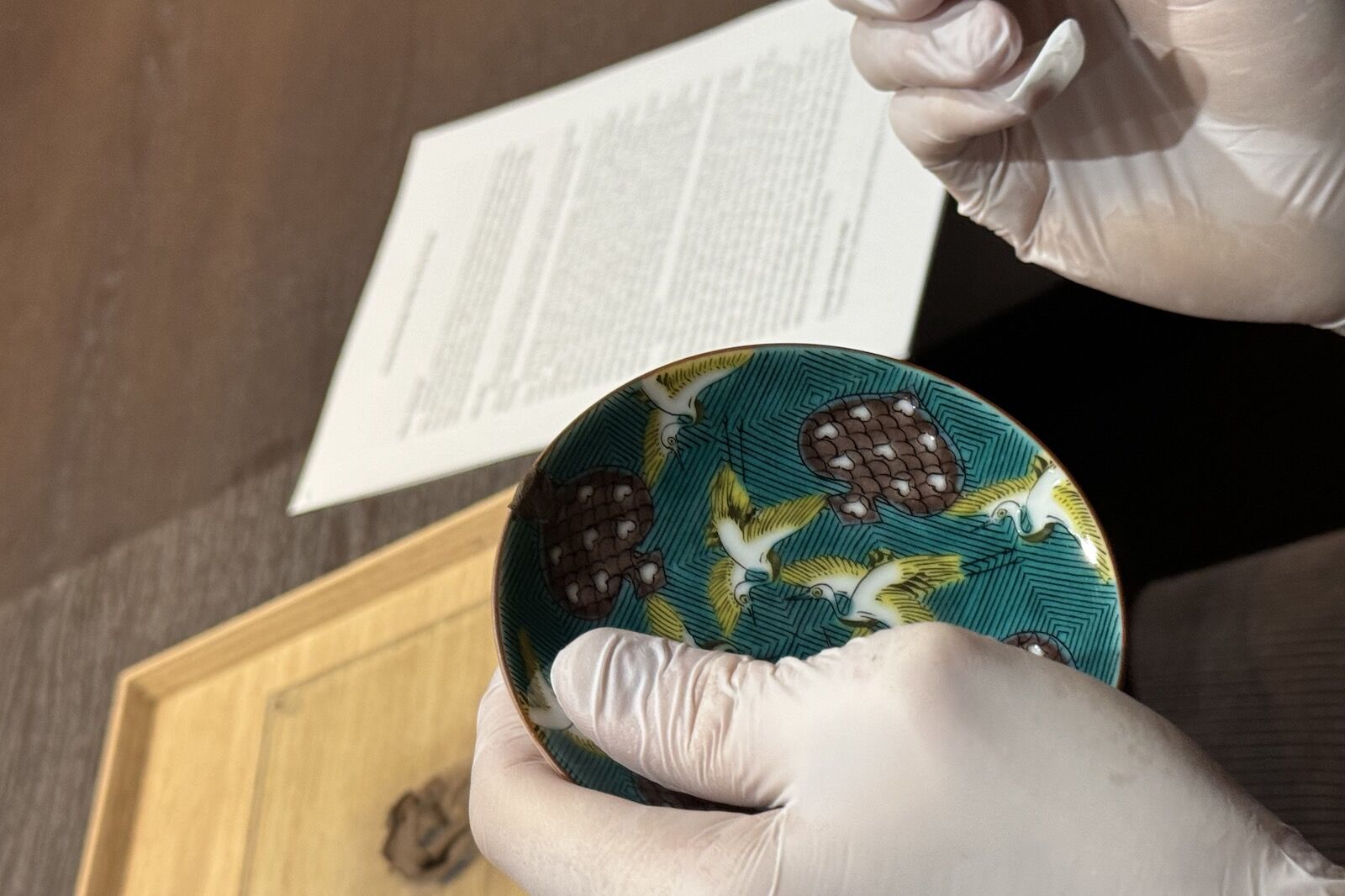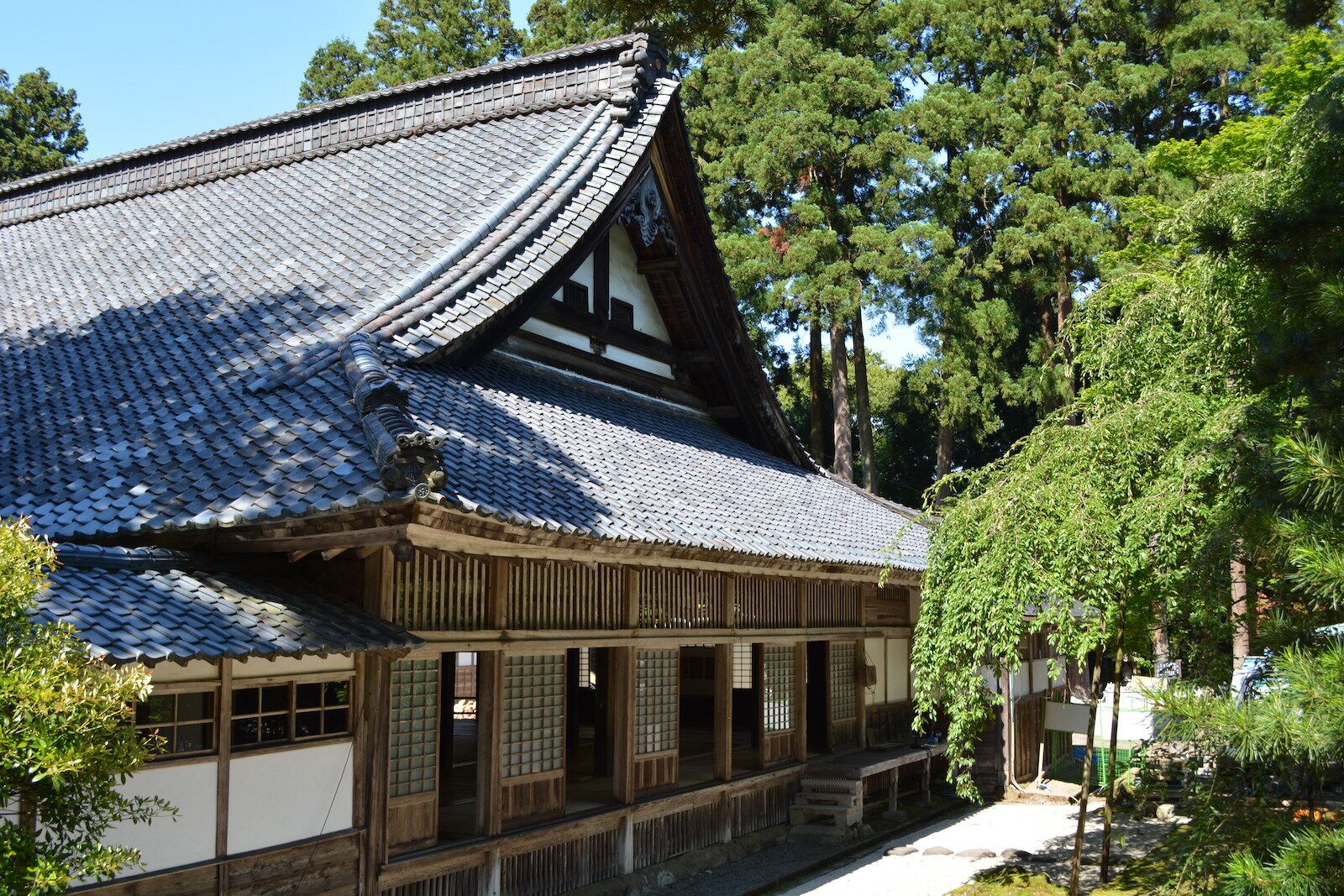Neon Japanese characters pulsed on centuries-old pillars. As the techno beat dropped, the golden statue of Amida Buddha seemed to dance in the strobe lights.
It was with a vaguely defined ambition of finding “zen” that I had set off on a rail journey through Japan’s Buddhist heartland. I had figured that my travels — timed to coincide with a new bullet train line to the little-visited Hokuriku region — would involve more meditating than raving.
